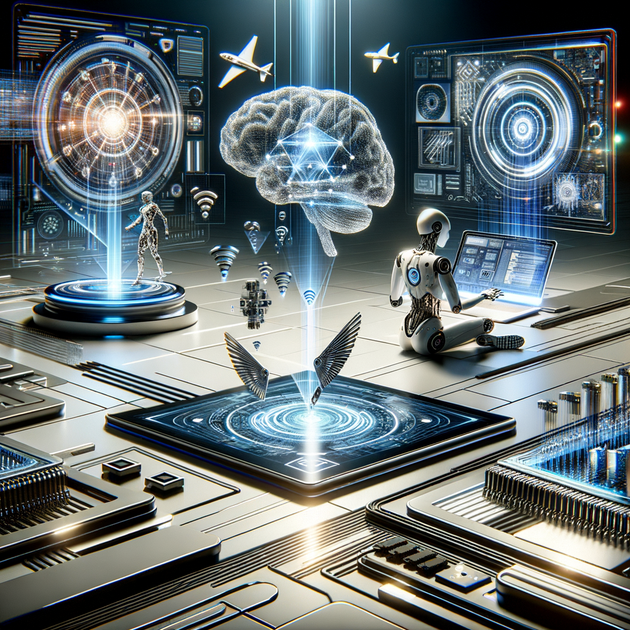Is Apple’s AI Revolution Leaving Intel and Nvidia Behind?
Imagine a world where your code completes itself, answering your questions before you even ask them. That’s precisely what Apple’s latest development tools promise, but it comes with a catch. If you’re a developer relying on Intel or Nvidia, you might find yourself out of luck. Let’s dive deep into how Apple’s changes are reshaping the AI and HPC landscape.
The Dawn of Xcode 16: A New Era for Developers
During the recent Worldwide Developers Conference (WWDC), Apple unveiled Xcode 16, their cutting-edge programming framework. It comes packed with AI-driven features designed to streamline the development process.
One standout feature is Code Complete, which uses AI to predict and complete your code. Another is SwiftAssist, a tool that answers coding questions and facilitates API usage.
Swift Programming Reimagined
Apple’s homegrown Swift programming language is at the heart of these innovations. With the new enhancements in Xcode 16, Swift development has never been more intuitive or powerful. But there’s a significant shift lurking beneath these advancements.
Apple Silicon: The Heart of the Change
With the introduction of Apple Silicon, a custom chip integrating CPUs, GPUs, and AI processors, Apple has created a tightly controlled ecosystem. These chips power everything from light web browsing to demanding AI applications.
Previously, Mac computers relied on x86 chips and GPUs from AMD and Nvidia. This reliance is now a thing of the past, leading to a limited development environment for AI and high-performance computing (HPC) applications.
Adapting to CoreML
At WWDC, Apple encouraged developers to migrate their machine learning models to CoreML. This framework is optimized for Apple’s custom CPUs, GPUs, and neural processors.

An open-source Python package, CoreML Tools, allows developers to convert PyTorch models to be compatible with Apple’s AI hardware. Additionally, frameworks like JAX, TensorFlow, and MLX can be utilized, but it’s clear Apple’s push is towards its proprietary tools.
The Exodus of Intel and Nvidia Support
Intel and Nvidia have reacted swiftly to Apple’s transition. In 2024, Intel pulled support for MacOS in its OneAPI parallel programming framework, signaling a sharp shift away from compatibility.
Nvidia, on the other hand, discontinued support for its AI and HPC CUDA programming tools for MacOS years ago, driving developers to Linux or Windows for Nvidia GPU development. It’s a clear case of tech giants vying for control over their ecosystems.
Apple’s Strategic Moves: Power Efficiency and Control
Apple’s broader AI strategy was also discussed at WWDC. Interestingly, they revealed that their language models had been trained on Google’s Tensor Processing Units (TPUs). Additionally, their new Private Compute Cloud, hosted in Google’s data centers, underscores their focus on power efficiency over raw power, minimizing reliance on Nvidia’s power-hungry GPUs.
Nvidia’s GPUs are geared towards running larger language models (LLMs) that require significant power. Apple’s approach prioritizes efficiency, employing unique arithmetic methods to optimize performance per watt.
Locked-Down Development: Apple’s Metal vs. Nvidia’s AI Enterprise
With these changes, developers are faced with a choice. Apple’s Metal framework is optimized for its in-house GPUs, offering limited support for older AMD and Nvidia GPUs. Metal is now the go-to for gaming and AI applications on MacOS, but it comes at the cost of flexibility. Similarly, Nvidia offers AI Enterprise, a suite that locks developers into Nvidia’s ecosystem, which comes with its own set of tools, albeit at a price.
The Cloud: A Middle Ground?
Fortunately, not all is lost for Mac developers wanting to use Nvidia GPUs. Cloud providers offer environments equipped with Nvidia GPUs, independent of PC operating systems. This hybrid approach allows developers to harness Nvidia’s power without being tethered to MacOS limitations.
What Does This Mean for Developers?
In summary, Apple’s bold move to homegrown hardware and tailored software ecosystem presents significant advantages and challenges. By creating a streamlined, efficient environment, they empower developers with advanced AI tools, but at the cost of reduced compatibility with other leading hardware providers.
As a developer, how will you adapt to these shifts? Whether you’re keen to leverage Apple’s efficient infrastructure or prefer the raw power of Nvidia’s GPUs, understanding these changes will be crucial in navigating the evolving landscape of AI and high-performance computing.
Share your thoughts in the comments below. Do you see Apple’s strategy as the future of AI development, or will Nvidia and Intel’s ecosystems prevail?
